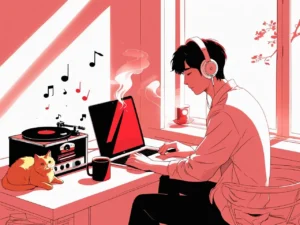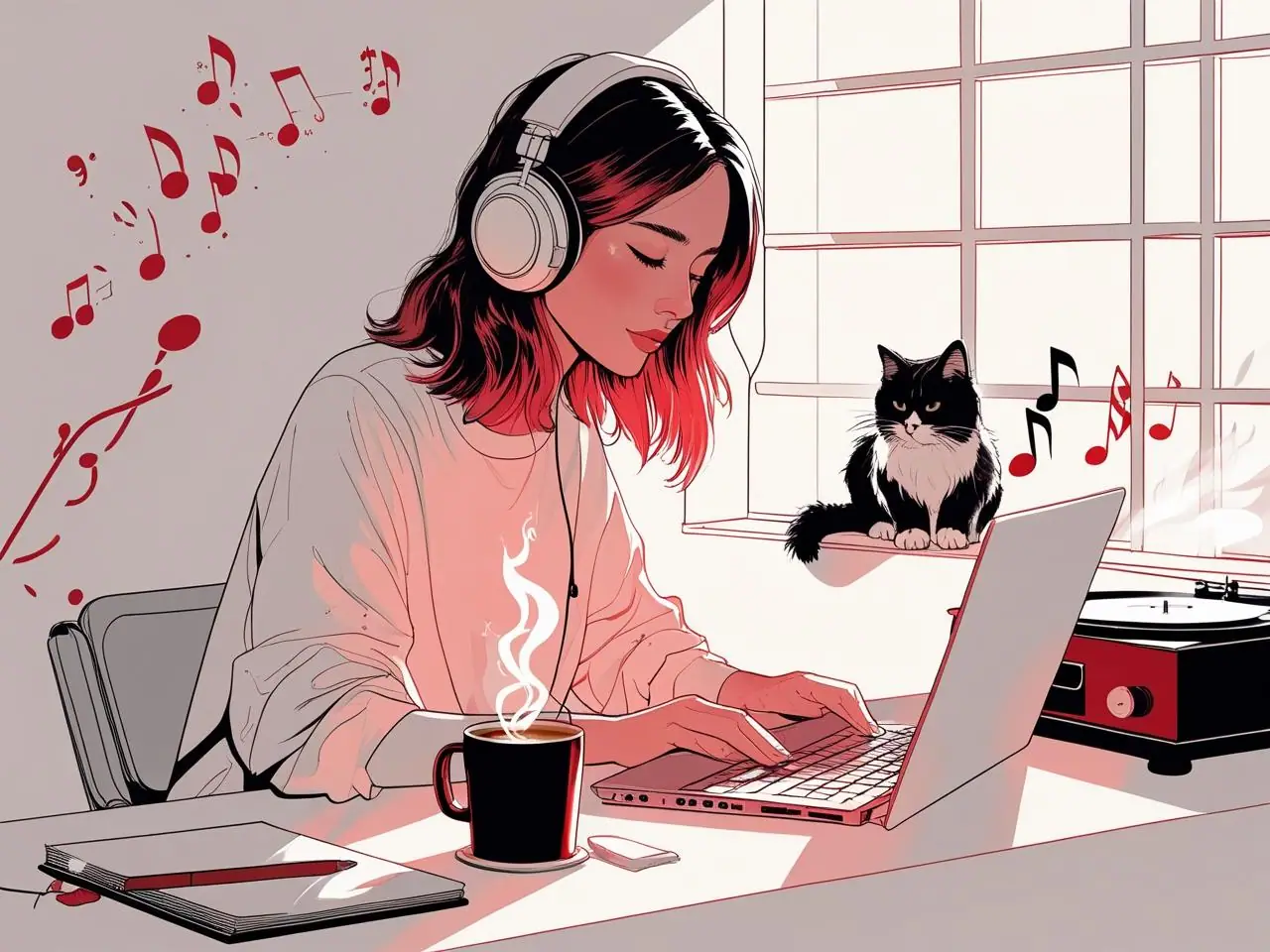Lo-fi hip-hop has become a global phenomenon—blending mellow beats, vintage textures, and nostalgic samples to create a chill, atmospheric vibe. Whether you’re a music enthusiast or a budding producer, diving into the world of lo-fi hip-hop can be both rewarding and creatively fulfilling. This beginner’s guide will walk you through the basics of making lo-fi hip-hop from scratch.

🎶 What Is Lo-fi Hip-Hop?
Lo-fi (short for low fidelity) embraces imperfections in sound—crackles, vinyl hiss, tape warble—that give it an authentic, nostalgic character. Combined with hip-hop-inspired beats, jazzy chords, and warm basslines, lo-fi hip-hop is perfect for studying, relaxing, or vibing.
🧰 Tools You Need to Get Started
You don’t need a fancy studio to make lo-fi hip-hop. Here’s a basic setup to get you going:
1. Digital Audio Workstation (DAW)
Choose a beginner-friendly DAW like:
- FL Studio (great for hip-hop/beat making)
- Ableton Live (powerful for sampling and effects)
- Logic Pro X or GarageBand (for Mac users)
2. MIDI Keyboard (Optional)
Helps in playing melodies or chords, but you can draw notes in your DAW too.
3. Audio Interface & Mic (Optional)
Useful if you want to record real instruments or vocals.
4. Headphones/Monitors
Good sound is essential. Start with decent headphones like Audio-Technica M50x or similar.
🧪 Step-by-Step: Making a Lo-fi Beat
Step 1: Set the Mood with Chords
Lo-fi thrives on jazz, soul, and R&B chords. Try playing minor 7ths, 9ths, or suspended chords for that dreamy vibe.
🎹 Tip: Use Rhodes or electric piano plugins like Lounge Lizard, Keyscape, or free options like LABS by Spitfire Audio.
Step 2: Create a Laid-back Beat
Keep it simple. A classic lo-fi drum pattern uses:
- Kick on 1 and 3
- Snare on 2 and 4
- Hi-hats offbeat or swung
🥁 Tip: Use drum kits with vinyl textures, or download free lo-fi sample packs online.
Step 3: Add a Bassline
A warm, smooth bass supports your chords. Follow the root notes or add movement with slides.
🔊 Use plugins like SubLab, Trilian, or your DAW’s stock bass synth.
Step 4: Sprinkle in Samples
Use old jazz records, field recordings, or royalty-free samples. Common sources:
- YouTube (chopped up carefully)
- Splice
- FreeSound.org
⚠️ Always check for copyright if you’re publishing your track.
Step 5: Add Lo-fi Vibes
Give your track that dusty, nostalgic touch using effects:
- Vinyl noise (plugins like iZotope Vinyl)
- Reverb & Delay
- EQ cuts (remove highs and lows to make it “muffled”)
- Saturation for analog warmth
Step 6: Structure & Arrangement
Lo-fi tracks are usually short and loop-based. Typical structure:
- Intro (8 bars)
- Main loop (16–32 bars)
- Breakdown (remove drums or melody)
- Outro
Add variation subtly—like muting drums or changing the chord progression slightly.
🎨 Optional: Add Ambient or Visual Elements
Lo-fi is an aesthetic as much as a genre. Think anime visuals, city rain, typewriter sounds, or cozy cafe ambiance.
> For YouTube or social sharing, pair your music with looped visuals using tools like Adobe Premiere Pro, Kapwing, or Canva video editor.
🚀 Where to Share Your Lo-fi Tracks
Once you’re confident, share your beats on:
- SoundCloud
- YouTube (with a chill background loop)
- Bandcamp
- Spotify (via DistroKid, TuneCore, etc.)
You can also upload to lo-fi playlists or submit to lo-fi YouTube channels like Chillhop, College Music, or Lofi Girl.
📚 Learn and Improve
Here are some great resources:
YouTube Channels: In The Mix, ED Talenti, You Suck at Producing
Discord Servers: Join communities to share and get feedback
🎧 Final Thoughts
Making lo-fi hip-hop isn’t about perfection—it’s about feeling, mood, and vibe. Let the imperfections shine, trust your ears, and most importantly, enjoy the process. Whether it’s a rainy-day beat or a mellow midnight groove, your lo-fi track can become someone’s background anthem.

1 thought on “How to Make Lo-fi Hip-Hop – Beginner’s Guide”